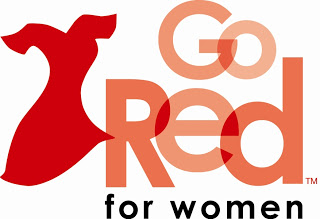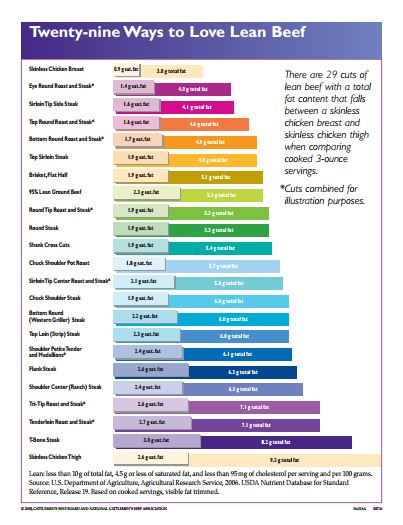Yesterday, I was honored to attend the American Heart Association’s “Go Red” for Women Initiative. This eye-opening event was aimed at educating women about heart disease and empowering them to lead healthier lives. Even though I already knew the statistics, the luncheon was a good reminder that cardiovascular disease is the single leading cause of death among American women. This insidious and often silent disease claims about one life every minute – this is a bigger toll that all cancers combined.
Just like last year, the “survivor” speaker was a vibrant woman in her early thirties, the model of perfect health at first glance. She could have been your sister, daughter or best friend. This particular speaker had never (until her first episode) experienced any symptoms that she could specifically pinpoint to the disease. Heck, she had run a marathon and was a practicing nurse with a cardiovascular specialty. Even with her professional savvy, she wanted to brush off the initial cardiac event experienced while in the hospital delivering her second child. She was young, she was fit; she couldn’t possibly have heart disease. But she did. Today, thankfully because of her intuition and quick action to pursue a follow-up doctor’s appointment right away, this young mom is receiving the treatment needed to live her life to the fullest and enjoy her young boys.
So if a marathon runner can have heart disease, isn’t everyone at risk? Speaking for myself, I’m just going to assume I am at risk and modify my behaviors proactively. High cholesterol, high blood pressure, smoking and diabetes are all major risk factors for having a heart attack. Being overweight and inactive also increases your odds and, unfortunately, so does your family history and the genes you were born with. However, the good news is that you can improve your heart health and lower your risk as much as 80 percent with lifestyle changes. These heart-healthy lifestyle changes include clean eating (for example reducing bad fats, lowering sodium intake, and eating fruits and vegetables), exercising more, getting regular check-ups and understanding your genetic predisposition, and saying “no” to cigarettes and avoiding second-hand smoke.
So, if the unimaginable ever happened, how would you know if you (or a loved one) was having a heart attack? It’s not just clutching your heart and falling to the floor, like in the movies. Sweating, pressure, nausea and jaw pain are all symptoms of a heart attack in women. They are also symptoms that we women often dismiss as the flu, stress or simply feeling under the weather – being unaware could put your life in jeopardy. Learn more about the symptoms and signs of a heart attack. Women who consider themselves healthy often misdiagnose the symptoms of a heart attack because they don’t think it could happen to them. The take away message here is not “beware” but “be aware”!
A shout out to my favorite peeps at The Texas Beef Council with whom I enjoyed sharing a table and breaking bread. Actually, since everyone at our table passed on the bread basket (many Paleo devotees), I should rephrase “breaking bread” to “slicing steak.” Yes, that’s right; as one of the sponsors of the event, TBC treated all of the attendees to a delicious Flat Iron Steak in Pepper Sauce on a Scallion Potato Pancake. The entrée was a flavorful reminder that incorporating beef into your diet can actually be a good thing! Most people don’t realize that there are 29 cuts of beef that are considered lean, meaning they fall under 200 calories and 10g of fat for a standard 3-ounce serving. Check out the chart of lean beef and start planning dinner tonight!
Also, did you know that eating lean beef can improve blood cholesterol levels? A 3-ounce serving of lean beef is composed of 50% monounsaturated fats, the same heart-healthy fats found in olive oil. Another 20% of the fats in that same 3-ounce serving come from stearic acid, a fatty acid shown to have a neutral response on blood cholesterol. In addition, a study published in the Archives of Medicine found that lean beef is just as effective as skinless chicken and fish at lowering LDL (“bad”) cholesterol and increasing HDL (“good”) cholesterol. Now that’s news I can use!
Sweet endings for the chocolate lovers, a low-fat dark chocolate mousse with berries followed.
So, what have you done to reduce your risk of heart disease? Do you have a favorite heart-healthy recipe, I’d love to hear all about it in the comments!







Awesome post! I especially love the 29 ways to love lean beef. Thanks for sharing:)